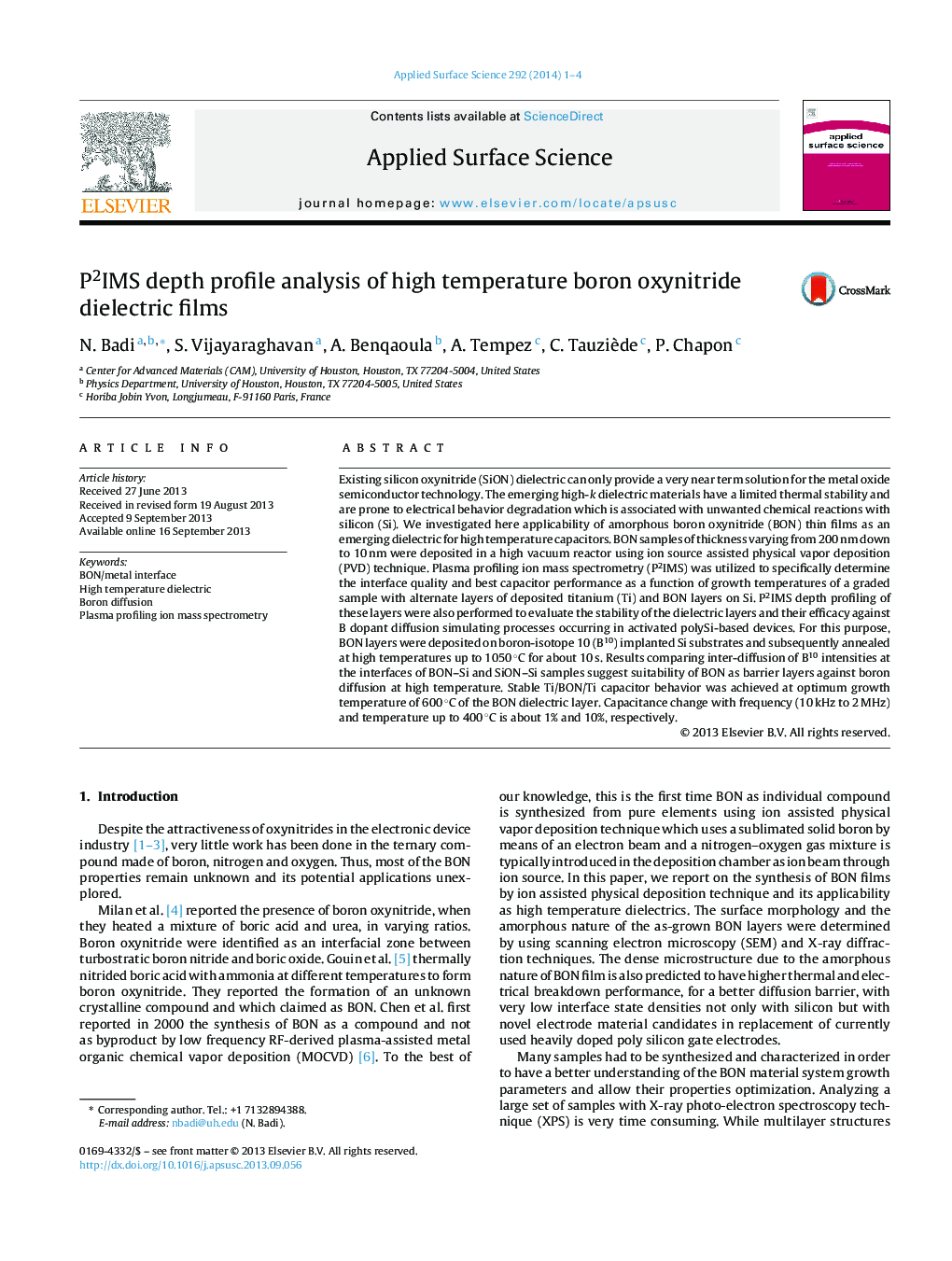| کد مقاله | کد نشریه | سال انتشار | مقاله انگلیسی | نسخه تمام متن |
|---|---|---|---|---|
| 5353313 | 1503672 | 2014 | 4 صفحه PDF | دانلود رایگان |
عنوان انگلیسی مقاله ISI
P2IMS depth profile analysis of high temperature boron oxynitride dielectric films
دانلود مقاله + سفارش ترجمه
دانلود مقاله ISI انگلیسی
رایگان برای ایرانیان
کلمات کلیدی
موضوعات مرتبط
مهندسی و علوم پایه
شیمی
شیمی تئوریک و عملی
پیش نمایش صفحه اول مقاله

چکیده انگلیسی
Existing silicon oxynitride (SiON) dielectric can only provide a very near term solution for the metal oxide semiconductor technology. The emerging high-k dielectric materials have a limited thermal stability and are prone to electrical behavior degradation which is associated with unwanted chemical reactions with silicon (Si). We investigated here applicability of amorphous boron oxynitride (BON) thin films as an emerging dielectric for high temperature capacitors. BON samples of thickness varying from 200 nm down to 10 nm were deposited in a high vacuum reactor using ion source assisted physical vapor deposition (PVD) technique. Plasma profiling ion mass spectrometry (P2IMS) was utilized to specifically determine the interface quality and best capacitor performance as a function of growth temperatures of a graded sample with alternate layers of deposited titanium (Ti) and BON layers on Si. P2IMS depth profiling of these layers were also performed to evaluate the stability of the dielectric layers and their efficacy against B dopant diffusion simulating processes occurring in activated polySi-based devices. For this purpose, BON layers were deposited on boron-isotope 10 (B10) implanted Si substrates and subsequently annealed at high temperatures up to 1050 °C for about 10 s. Results comparing inter-diffusion of B10 intensities at the interfaces of BON-Si and SiON-Si samples suggest suitability of BON as barrier layers against boron diffusion at high temperature. Stable Ti/BON/Ti capacitor behavior was achieved at optimum growth temperature of 600 °C of the BON dielectric layer. Capacitance change with frequency (10 kHz to 2 MHz) and temperature up to 400 °C is about 1% and 10%, respectively.
ناشر
Database: Elsevier - ScienceDirect (ساینس دایرکت)
Journal: Applied Surface Science - Volume 292, 15 February 2014, Pages 1-4
Journal: Applied Surface Science - Volume 292, 15 February 2014, Pages 1-4
نویسندگان
N. Badi, S. Vijayaraghavan, A. Benqaoula, A. Tempez, C. Tauziède, P. Chapon,